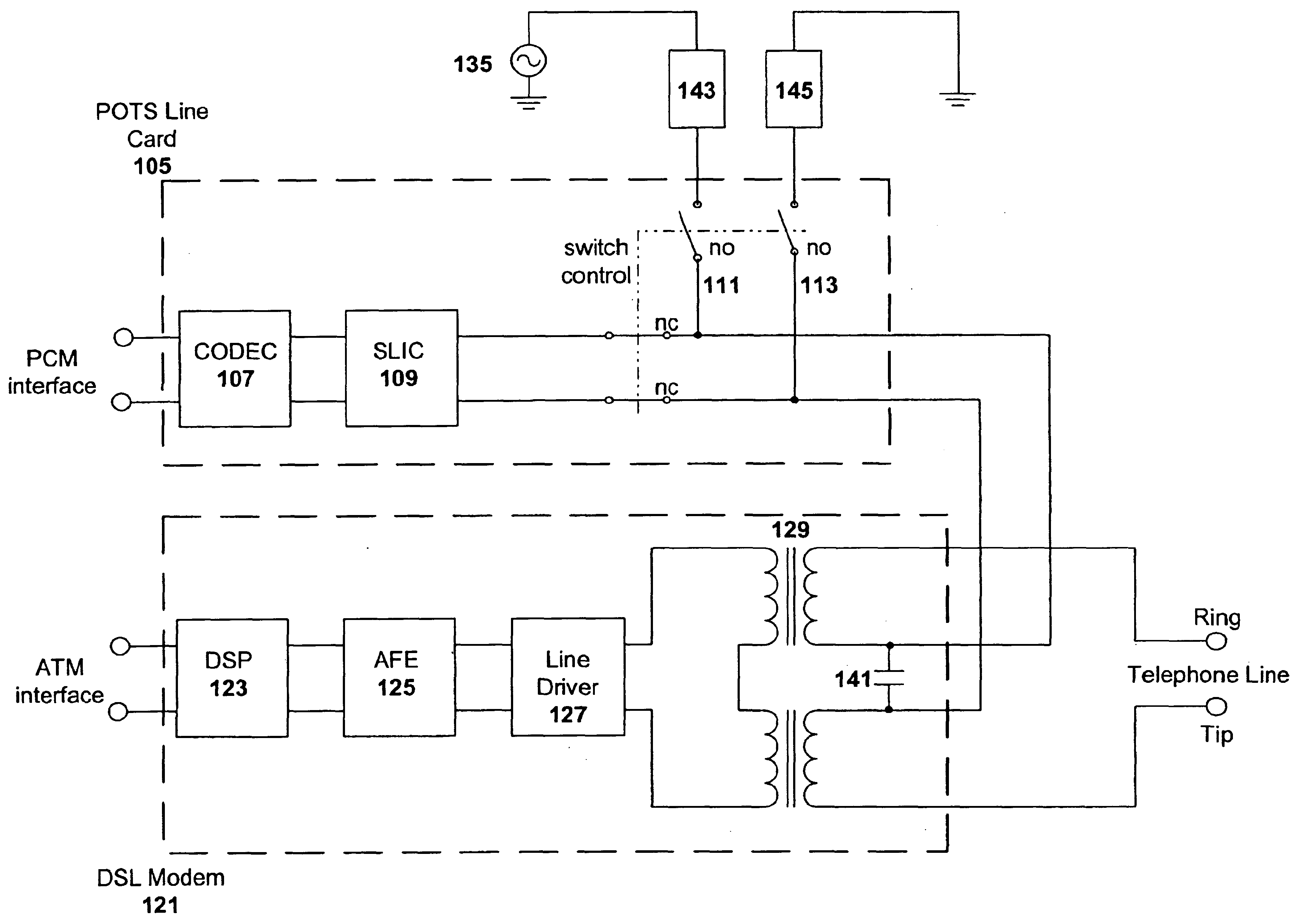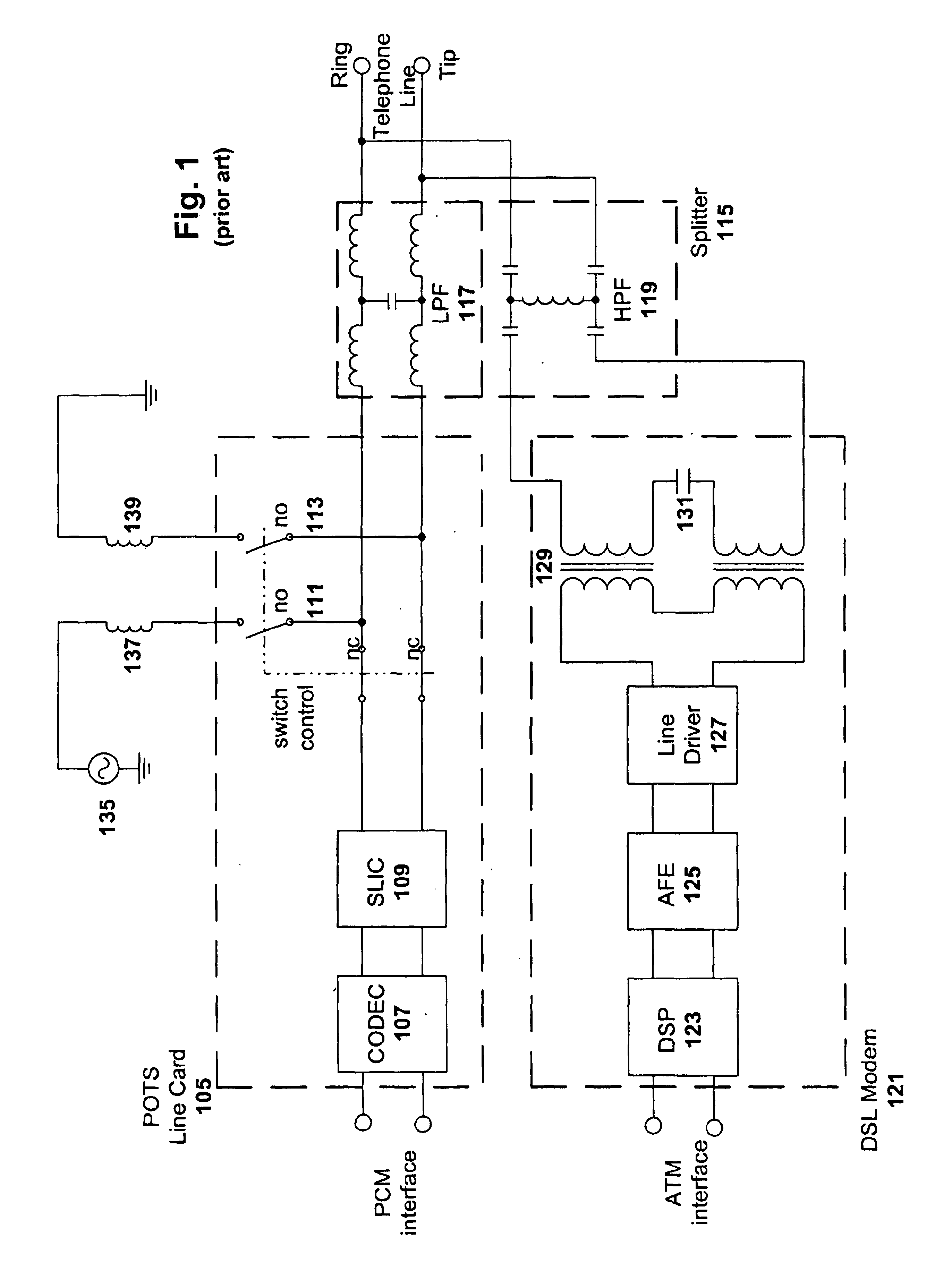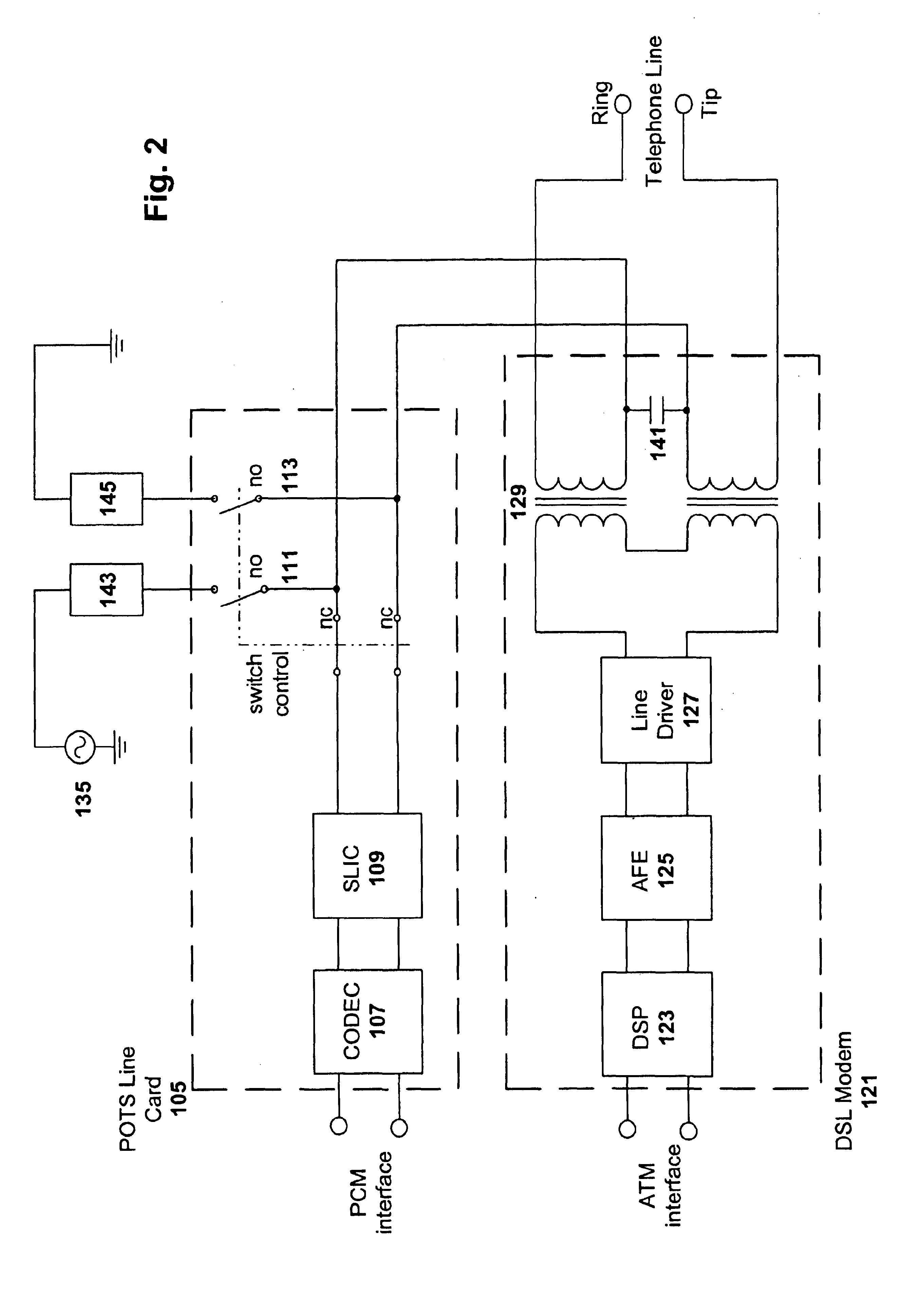Central office interface techniques for digital subscriber lines
a technology of central office and subscriber line, applied in the field of telecommunications, can solve problems such as the ringing of the telephone, and achieve the effects of reducing the physical space needed to house the central office circuitry, reducing the cost of materials, manufacturing, deployment and maintenance, and reducing the physical spa
- Summary
- Abstract
- Description
- Claims
- Application Information
AI Technical Summary
Benefits of technology
Problems solved by technology
Method used
Image
Examples
Embodiment Construction
FIG. 1 is a block diagram of a conventional central office interface for a digital subscriber line. The interface includes splitter 115, POTS line card 105 and DSL modem 121. Additionally included is a ringing circuit comprised of source 135, inductor 137 and inductor 139.
Splitter 115 is a conventional passive splitter and is used to couple the telephone line with the POTS line card 105 and the DSL modem 121. The splitter 115 is comprised of a low pass filter 117 and a high pass filter 119. Low pass filter 117 isolates the low frequency POTS signal (e.g., voice and fax data under 4 KHz) from the incoming telephone line, and provides that POTS signal to the POTS line card 105. High pass filter 119 isolates the high frequency DSL signal from the incoming telephone line, and provides that DSL signal to the DSL modem 121. Each of these filters can be implemented in a number of ways to be compliant with applicable splitter specifications. For example, low pass filter 117 can be a 5-pole ...
PUM
 Login to View More
Login to View More Abstract
Description
Claims
Application Information
 Login to View More
Login to View More - R&D
- Intellectual Property
- Life Sciences
- Materials
- Tech Scout
- Unparalleled Data Quality
- Higher Quality Content
- 60% Fewer Hallucinations
Browse by: Latest US Patents, China's latest patents, Technical Efficacy Thesaurus, Application Domain, Technology Topic, Popular Technical Reports.
© 2025 PatSnap. All rights reserved.Legal|Privacy policy|Modern Slavery Act Transparency Statement|Sitemap|About US| Contact US: help@patsnap.com



